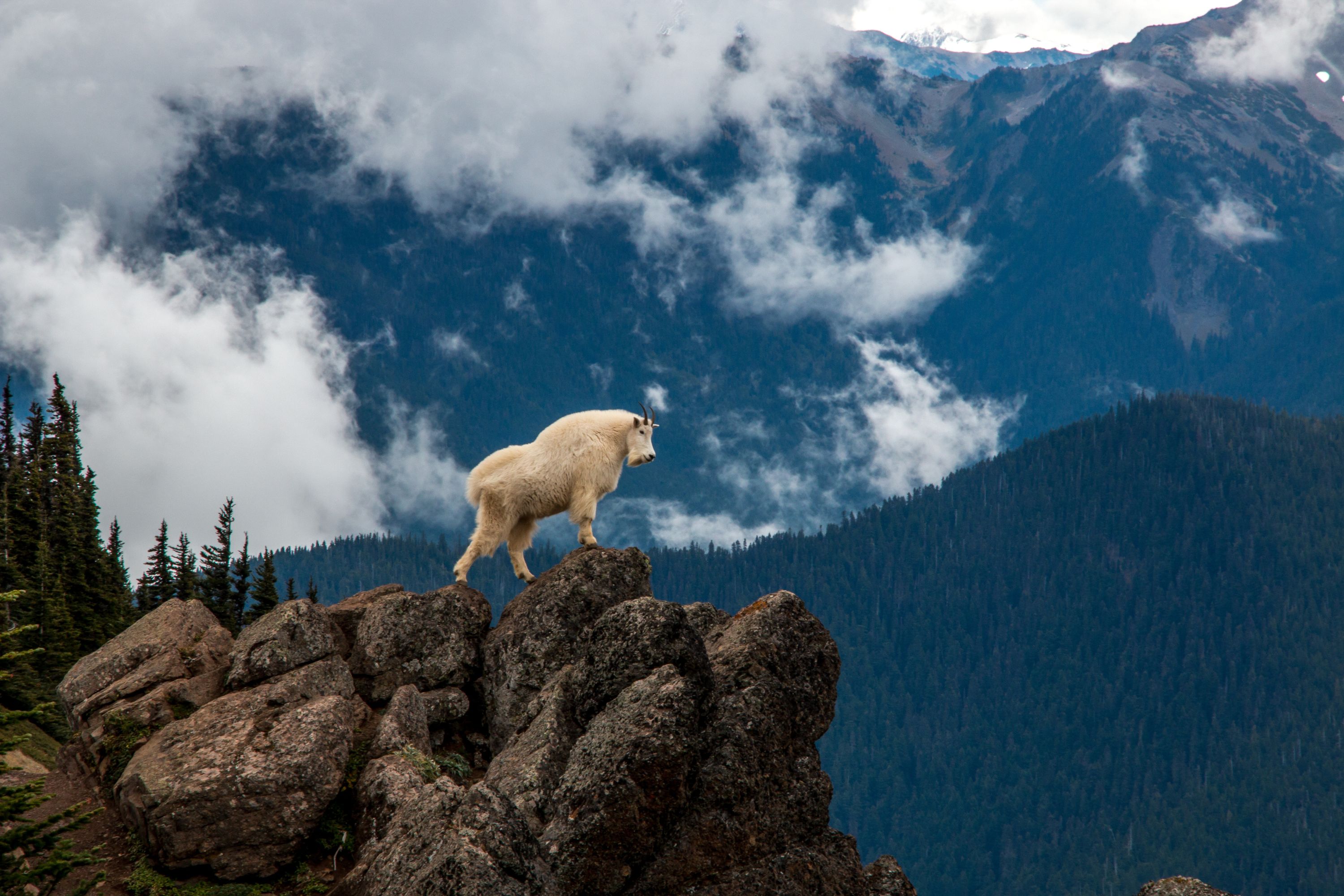Wildlife Managers Transported Mountain Goats To The Cascade Mountains In Washington To Boost Population Numbers, But Many Are Mysteriously Dying

Over the course of three summers, wildlife managers worked to transport mountain goats in Washington State’s Olympic National Park to the Cascades, a vast mountain range that extends through much of western North America.
The goats were once regularly found in the Cascades, and researchers aimed to boost the goat population there. However, most of the goats that were relocated are now dead.
Between 2018 and 2020, researchers relocated 325 goats by blindfolding and airlifting them into the Cascades.
Only a small portion of them have survived, but since not all the goats were tracked, it’s difficult to come up with an exact number of the ones that are still alive.
According to a study led by a now-retired wildlife biologist named Rich Harris, the likelihood of a translocated goat living year after year was just 56 percent. By the end of 2022, 165 out of a sample of 217 translocated goats had died.
The species used to be common in the Cascades, which was their natural habitat. But after decades of being overhunted, their numbers have experienced a sharp decline.
The relocation project’s goal was to help encourage population growth in the Cascades while removing the mountain goats from their non-native habitat of the Olympic Mountains, where they harmed plants in the region.
The results of the relocation efforts have revealed the extent to which climate change is impacting the landscape in the West. It was expected that some of the mountain goats would die during the first winter because they weren’t acclimated to the region yet.
But, the effects of climate change led to worsened mountain goat survival rates. Even the native goats were struggling to survive.
Maria – stock.adobe.com – illustrative purposes only, not the actual goat
Sign up for Chip Chick’s newsletter and get stories like this delivered to your inbox.
Harris found that changing weather conditions driven by climate change were associated with the survival rates of native mountain goats for the past 20 years.
It proves that the deaths of the translocated goats were not just due to being in unfamiliar territory.
In the Cascades, goats depend on cool spring seasons and melting snow to nourish the meadows they feed in during the summer.
But lately, the mountains have been receiving heavy snowfall, rapid melting in the spring, and dry summers that have limited their food sources.
Rising global temperatures are transforming alpine environments, putting other species besides the goats at risk.
There is still hope that the goats will rebound, but it’s too soon to tell. For now, scientists will continue monitoring the goats.
Welcome to Billionaire Club Co LLC, your gateway to a brand-new social media experience! Sign up today and dive into over 10,000 fresh daily articles and videos curated just for your enjoyment. Enjoy the ad free experience, unlimited content interactions, and get that coveted blue check verification—all for just $1 a month!
Account Frozen
Your account is frozen. You can still view content but cannot interact with it.
Please go to your settings to update your account status.
Open Profile Settings